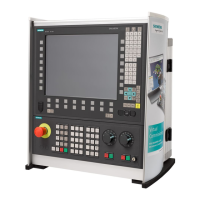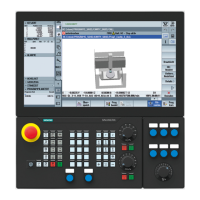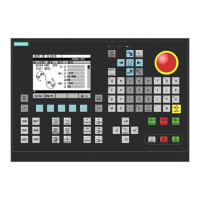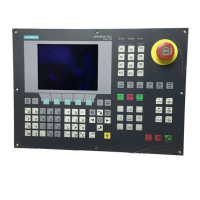Detailed Description
2.3 Channel
Mode Group, Channel, Program Operation, Reset Response (K1)
Function Manual, 08/2005 Edition, 6FC5397-0BP10-0BA0
2-13
The user must configure a message to the operator indicating that mode change is
disabled. No signal is set by the system.
• Mode change from MDA to JOG
If all channels of the mode group are in Reset state after a mode change from MDA to
JOG, the NC switches from JOG to AUTO. In this state, part program commands START
or INIT can be executed.
If a channel of the mode group is no longer in Reset state after a mode change, the part
program command START is rejected and Alarm 16952 is issued.
2.3 2.3 Channel
Assignment of programs
Part programs are assigned to channels. Programs of different channels are largely
independent of each other.
Channel properties
A channel constitutes an "NC" in which one part program can be executed at a time.
Machine axes, geometry axes and positioning axes are assigned to the channels according
to the machine configuration and the current program status (AXIS CHANGE, GEO AXIS
CHANGE, SETMS).
The system assigns each channel its own path interpolator with associated programming.
Each channel can run its own machining program, which is controlled from the PLC.
The following channelspecific functions make it possible for the channels to process part
programs independently:
• Each channel has its own NC Start, NC Stop, Reset.
• One feedrate override and one rapid traverse override per channel.
• Dedicated interpreter for each channel.
• Dedicated path interpolator for each channel, which calculates the path points such that
all the machining axes of the channel are controlled simultaneously from path axes.
• Selection and deselection of tool cutting edges and their length and radius
compensations for a tool in a specific channel.
For more information on tool offset, refer to:
References:
/FB1/ Description of Functions, Basic Machine; Tool Offset (W1)
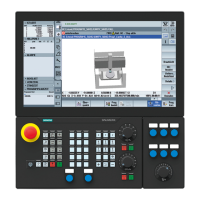
